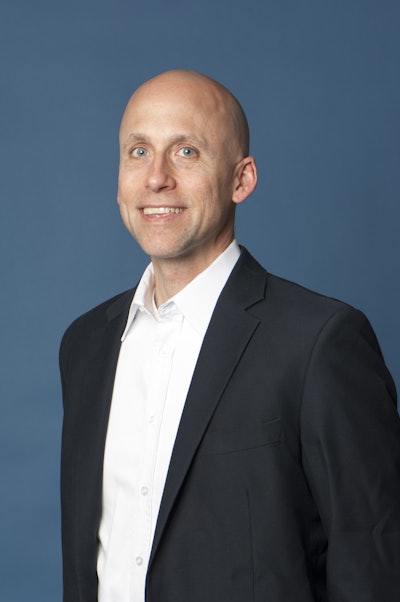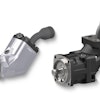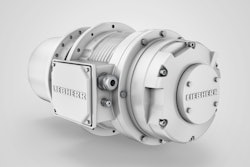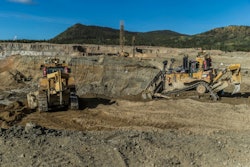
Responses from Russ Schneidewind, Vice President, Global Sales & Marketing, HydraForce Inc. and Tony Casale, Executive Vice President, Business Development, HydraForce Inc.
Brexit, BRIC and the Global Landscape
What effect, if any, do you think this rise in consolidation will have on the industry as a whole, and within your own segment?
Casale: Consolidation in our industry specific to our segment has stopped. Prior to the great recession several of our competitors were purchased by large hydraulic suppliers who were intent on building a full ‘portfolio’ product offering. Since then smaller niche competitors are showing up across the globe and few of the incumbents continue to grow.
Schneidewind: Our customers with manufacturing locations in many regions of the world require us to manufacture our products in those very same regions with the goal of low total cost of ownership. We have responded to this demand by expanding our manufacturing capacity into these regions and re-organizing our sales and marketing department to align better with their strategic sourcing and engineering departments.
Are the BRIC (Brazil, Russia, India, China) economies still major players?
Schneidewind: We still see significant opportunities in Brazil, China and India in certain markets. The agriculture market in Brazil seems to have stabilized while the Chinese consumer markets continue to drive light construction activity. India will need infrastructure investments and we will be there to support the OEM customers with the products they will need to meet the demand. Our customers in these regions and markets continue to innovate and develop new products that require our technology.
Technologies of the Future: Hybrids, Electrification and Smart Systems
In regards to hybrids, what technological limitations currently exist that are impeding the ability to harness the full potential of hybrid power?
Schneidewind: For the most part, the technology already exists to harness the potential of hybrid power, but the cost is probably the biggest limitation at this point. Machine designers are forced to compromise in the design of the hybrid system to balance the cost increases for the additional products with the return on investment that should be realized within 1-1.5 years. Hybrid systems could be optimized if fuel prices increased high enough to justify the increased expense with a return on the investment to the end user within 1 year or if the hybrid system can eliminate or reduce the complexity of the existing system by removing some products from the system and replacing it with items required for the hybrid function.
What role is electrification and smart systems playing within your company’s product designs?
Schneidewind: Electrification and smart systems in the form of increased reliance on controllers and electronic inputs for machine control is good for our industry since our product is required to integrate the electronic inputs with the hydraulic outputs. In response to the demands for more electrohydraulic functionality, we are developing products for higher flow and higher pressure applications.
What’s next on the technology horizon? Are there emerging technologies which will affect your products or the industry as a whole? How will hybridization, electrification and smart systems continue to progress within the next year and on into the future?
Schneidewind: Our customers continue to develop machines with the goal of improving energy efficiency and productivity. Smart systems that provide more information to the operator and the machine itself will contribute to improved efficiency and productivity and therefore will continue to progress in the future especially as costs for these feedback devices and controllers continue to drop. As electronic feedback devices are introduced into more electrohydraulic systems, we can actually simplify our hydraulic circuits by removing some of the “hydraulic” feedback devices and lower our cost for the system. As a result, we want to develop new products and technologies that will take advantage of the feedback devices in the electrohydraulic system so that our devices can add more value to the smart system.
Challenges on the Horizon
What new challenges have arisen that effect the way your company designs or manufactures its products? How it differentiates itself from the competition?
Casale: Reliability or durability and driving down the number of machine infant mortality failures are the mantras of the day. As stated above this why there has been a significant investment into our product development facilities. In order, to meet these challenges manufacturers have pushed more testing down to the supplier and our asking for it sooner in the product development cycle.
Schneidewind: The pace of new product development requires us to be able to design and test new products quickly. Our customers demand that products we deliver at the prototype level work the first time without problems. In addition, the specifications we need to meet for new products continue to get more difficult. As a result, we have invested significantly in our capability and capacity to conduct the performance, qualification and verification testing before the customer puts our new product on their machine. In addition, we have enlarged our applications laboratory to bring full-scale machines from customers into our facility for proprietary testing. Our customers are demanding customized solutions in order to differentiate themselves from their competition, thus requiring us to be flexible in manufacturing these solutions at a globally competitive cost.
Has the rate of technological advancement (such as the rapid emergence of data products) had any impact on business decisions, development, or product performance and client expectations?
Casale: We have been able to take advantage of ‘Big-Data’ as some have termed it, in our approach to marketing. Further, our company has a rich knowledge base that we have built over the years. Harnessing this knowledge until recently has been a challenge. Fortunately, bespoke search engines have been developed to help mine this data so we can accelerate product development and limit the number of problems that we may have ‘re-solved’ without such a tool.




















